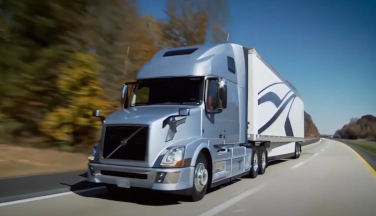New Heavy Duty Oil Categories are Coming: The What, When and Why of PC-12
Stricter emission requirements effective 2027


We are starting to get questions from customers about PC-12, the American Petroleum Institute’s new “proposed category” for heavy duty engine oil performance. Although we are a few years from its commercialization, heavy duty OEMs, lubricant marketers and additive suppliers are already working to define the requirements for the next generation of oils. Here’s a quick rundown of what PC-12 is all about, why new oil categories are necessary, and when you can expect to see PC-12 products come to market.
In December 2022, the EPA announced that it had finalized stricter emission requirements for heavy duty engines, effective with model year 2027. Under these new standards, nitrogen oxide (NOx) and particulate matter (PM) limits will be much more stringent, calling for a 75% reduction in NOx emissions and a 50% reduction in PM emissions. In parallel, the EPA is phasing in stricter greenhouse gas emission standards and mandating that aftertreatment systems have an increase in service life. These new standards are exerting pressure on engine OEMs to deliver cleaner, more efficient engines and make their exhaust aftertreatment systems more effective at cutting emissions. Currently, OEMs are required to produce engines that comply with emission standards from the assembly line up to roughly 435,000 miles. Under the new standards, this requirement will increase to as much as 800,000 miles – nearly double the current useful life requirements.
As we’ve seen with previous changes to emission standards, there are implications for engine lubricants. In anticipation of the new emission mandate, the Truck and Engine Manufacturers’ Association (EMA), in collaboration with the Diesel Engine Oil Advisory Panel (DEOAP), formally requested the development of new oil categories to meet the changing needs of engines. The API agreed to the request in January 2022, and thus PC-12 will become the new standard.
In 2016, the API introduced two new diesel engine oil categories - CK-4 and FA-4. CK-4 specifications called for improvements in oxidation stability, shear stability, and oil aeration control along with other benefits. Meanwhile, FA-4 allowed us to unlock the fuel economy advantage of lower viscosity engine oils. Now, the on-highway engine manufacturers have asked that we go even further, which means we may see viscosity grades of SAE 0W-20 and 5W-20 in heavy duty applications. That would be a first for the U.S. truck market. These 20-weight viscosity grades are starting to become prevalent in modern engines in Europe and are now being considered in North America under the PC-12 initiative.
Other performance attributes on the drawing board are improved oxidation stability, which will help extend drain intervals, and better wear control, which will call for new and more rigorous testing.
In the off-road equipment segment, OEMs and operators are less concerned with fuel economy, but do stand to benefit from improved wear protection and all-weather performance, which is an important consideration for operating in areas prone to extreme hot or cold temperatures.
As was the case with PC-11, which led to the introduction of CK-4 and FA-4 oils, PC-12 is going to result in two new categories. Although they have not been officially named, people in the industry have already begun calling them CL-4 and FB-4. CL-4 oils should be backwards compatible with older vehicles, while FB-4 will continue to advance the trend toward lower viscosities to help improve fuel economy in newer engines.
If all goes according to plan, you will start to see the next generation of heavy-duty lubricants licensed and available in December 2026, in time for the 2027 model year. That may sound like a long way off, but new oil categories take a long time to develop, and we in the industry are at the very earliest stages of deliberations over the specifications. Meanwhile, fleet operators try to plan their equipment replacement cycles well in advance, and if you are buying new trucks in 2027, they will be subject to the new emission mandates.
The effort to curb harmful emissions is ongoing. Engine technology has to evolve as a result, and that means lubricants must evolve as well to meet changing demands. That is what is driving PC-12. We will keep you informed as the framework of these new categories starts to take shape.
02/16/2023

























